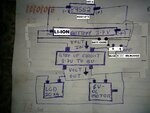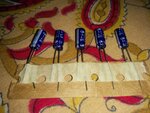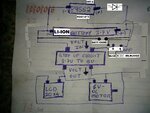gauravkothari23
Advanced Member level 2
HI all again.....
i have a very small issue regarding the circuit. circuit diagram has been attached.
my only problem is that when i connect my 5v charger to charge the battery the 89s52 exit the interrupt (INT-0) automatically. why is it so. when i connect my charger where is the interrupt being triggered to make 89s52 exit.
and also sometimes if it does not exits the interrupt while charger is connected... then after i remove my charger from the circuit.... i am not able to exit it even manually.... 89s52 shows 4.10v.. but still does not exits the interrupt.
i have a very small issue regarding the circuit. circuit diagram has been attached.
my only problem is that when i connect my 5v charger to charge the battery the 89s52 exit the interrupt (INT-0) automatically. why is it so. when i connect my charger where is the interrupt being triggered to make 89s52 exit.
and also sometimes if it does not exits the interrupt while charger is connected... then after i remove my charger from the circuit.... i am not able to exit it even manually.... 89s52 shows 4.10v.. but still does not exits the interrupt.


